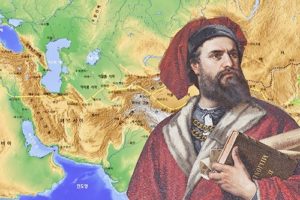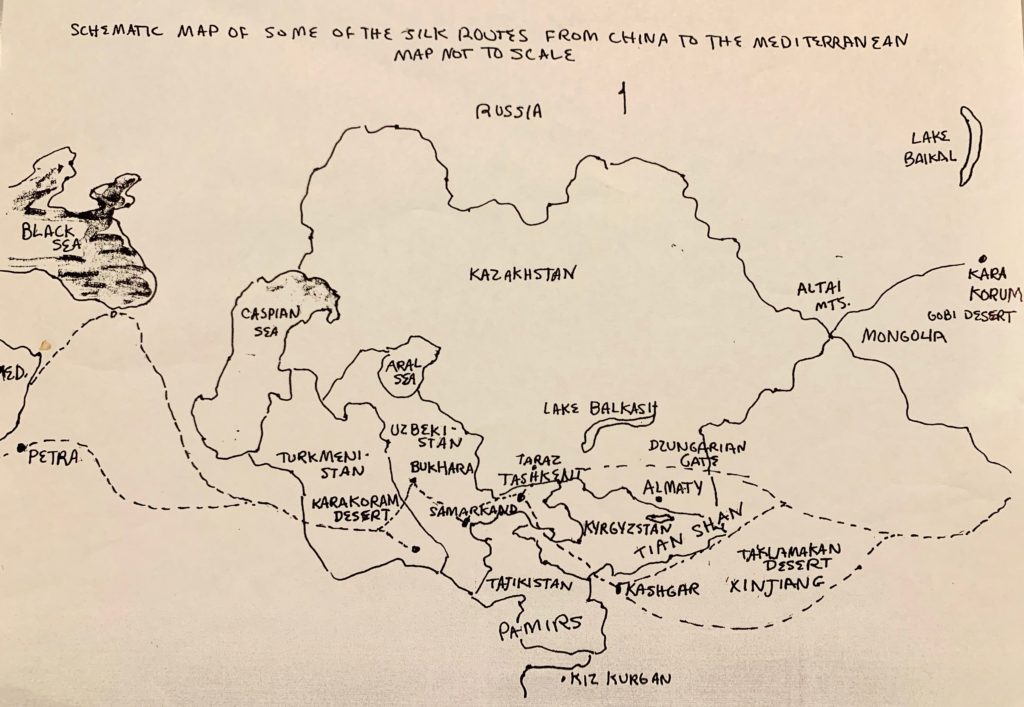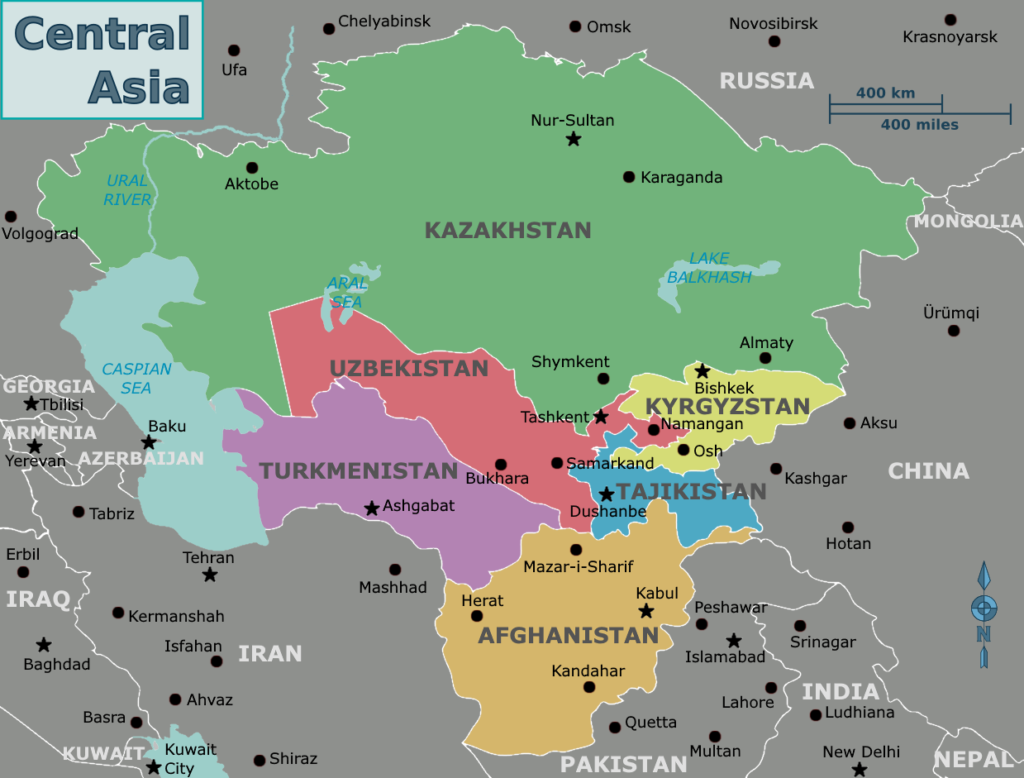Marco Polo Music
 Marco Polo (1254 – 1324) was a Venetian merchant, explorer and writer who travelled through Asia along the Silk Road between 1271 and 1295. His travels were the inspiration for a set of piano pieces I commissioned my friend Jo Lombard to write for my students to celebrate the the turn of the century on January 1, 2000. Jo had recently seen an exhibit about the Silk Road at the National Geographic Society Museum in Washington and produced a set of nine pieces entitled Postcards from Marco Polo, which she copyrighted in 1999.
Marco Polo (1254 – 1324) was a Venetian merchant, explorer and writer who travelled through Asia along the Silk Road between 1271 and 1295. His travels were the inspiration for a set of piano pieces I commissioned my friend Jo Lombard to write for my students to celebrate the the turn of the century on January 1, 2000. Jo had recently seen an exhibit about the Silk Road at the National Geographic Society Museum in Washington and produced a set of nine pieces entitled Postcards from Marco Polo, which she copyrighted in 1999.
A post on Genghis Khan and the Making of the Modern World by Jack Weatherford, that I had written in Scotland last month, drew a comment from Peter Heinrich, who had been an exchange student to my high school from Germany in 1961. He prompted me to reread a book I had bought in 2015, The Silk Roads, a New history of the World by Peter Frankopan. To my surprise, I found that I had skipped over Chapter 10 about Genghis Khan. Apparently the title of that chapter, “The Road of Death and Destruction,” turned me off. Seven years later, I found Weatherford’s treatment of Genghis Khan much more compelling, as he emphasized his strategic thinking and his leadership skills.
Both books mentioned Marco Polo and brought Jo Lombard’s pieces to mind. As soon as I returned home, I started practicing them again. The Silk Road is an accumulation of trade routes that stretched from Europe across Asia for centuries. Genghis Khan, his sons and grandsons were dominant leaders there for about 130 years. Along with her compositions Jo Lombard included this map she drew to give my students an overview of the Silk Road and to help identify the places she described musically.
At the very bottom of this map you can find Kiz Kurgan. According to legend, a Chinese Princess was on her way to marry a Persian King. Near the Khunjerab Pass between Xinjiang and Pakistan, her caravan was set upon by robbers. Taking refuge in Kiz Kurgan, she had a fortress built and stayed to marry a visiting Sun God. Their child grew up to be the first of the Kyrgyz chieftains. Here is the first Postcard from Marco Polo.
Jo Lombard wrote her pieces for beginners to late elementary students. They are quite different from most pieces for early students, The melodies derive from ancient modes and range from very low to very high on the piano. Students with active imaginations find them quite interesting. Here is another postcard, this one from Shambhala, a mysterious paradise on earth near Mount Belukha. This snow-covered mountain is high in the Altai Mountains, where Kazakhstan, Russia and China intersect.
On the mountains in Kyrgystan, Tajikistan and Pakistan, Snow Leopards can still be found, though not many are left after centuries of hunting. Seeing one today is considered spiritual significant.
A nomadic tribe of Mongolian warriors appeared in Central Asia in about 1150. They lived on horseback and slept in portable tents called yurts. Led by the ruthless Genghis Khan, they terrified villages from China to Turkey. Galloping westward along the Silk Road, they would have crossed the Tian Shan mountains at a pass called Dzungarian Gate. You’ll find this Gate on Jo Lombard’s map to the east of Lake Balkhash.
Since the seven countries with names ending in -stan can be confusing, you may find this current map useful.
You’ll find the next postcard site, Bukhara, in Uzbekistan on the current map. Founded between 2000 and 3000 years ago, Bukhara was admired by Alexander the Great in 329 BCE and flourished in the 10th century CE as a center of learning. In Farsi, its name means “source of knowledge.” In 1127, it had a 45,000 volume library and the tallest building in the world, the Kalyan Minaret, 47 meters high. Spirtual leaders called muezzins climbed to the top five times each day to call the faithful to prayer. At the very top were 16 arches, through which night travelers for miles around could see a burning torch.
On Jo Lombard’s map, the Karakoram Desert is far to the west or left: the town of Karakorum is on the extreme right edge, south of Lake Baikal in Mongolia. Karakorum was built by Genghis Khan as his capital and a permanent base for his horsemen. Jo drew examples of the stones she had seen at the National Geographic exhibit.
One of the oldest and largest cities in Uzbekistan, Samarkand can be found on both maps. This city was an oasis for travelers and a mecca for trade. The Chieftain Tamerlane, whose aim was to conquer the entire known world, made Samarkand his headquarters in the 14th century. Here the minaret towers of the largest msque were not used, as they were thought to be holding up the sky. As I play this piece I recall marketplaces I have visited in Israel and Oman–complex places with both quiet corners and noisy intersections.
In deserts along the Silk Route, oases were welcome sights. Traders coming from Kyrgyzstan stopped at the Oasis in Old Taraz on their way west. Founded in the sixth century, it became a Turkish capital in the 11th century, before the Mongols destroyed it in the 13th century. Taraz was rebuilt in the modern era as Dzhambul.
The last postcard Jo composed on behalf of Marco Polo was the only place I have actually visited myself, Petra, on the left edge of Jo’s map. It was one of the most magical places I’ve ever been, as you can see in my post about traveling in Jordan in 2018. Once an oasis stop for camel caravans carrying Chinese silk and frankincense, the city of Petra was hand-carved out of sandstone cliffs about 2000 years ago by a tribe called the Nabataeans. These Jordanian desert Arabs were water engineering geniuses, chiseling from the rock cliffs a network of channels, dams, reservoirs, and fountains, which conserved the meager rainfall. Hidden in a 250-foot high crack in the rock, the city remained undiscovered until a 19th century Swiss explorer found its 400 square miles of stone buildings.
Thank you, Jo Lombard, for taking me and my students and my readers on a musical journey to distant lands. Your artistry lives on in these compositions.


Leave a Reply